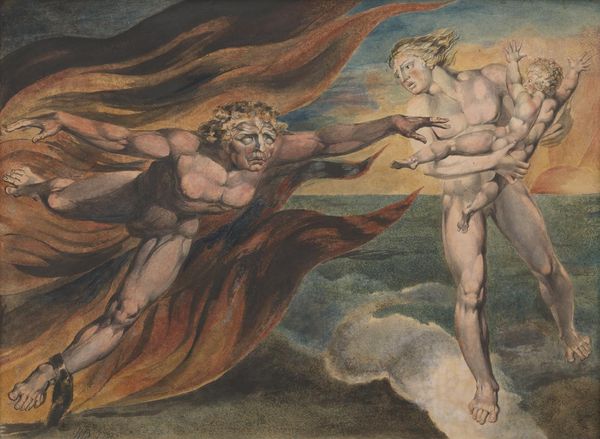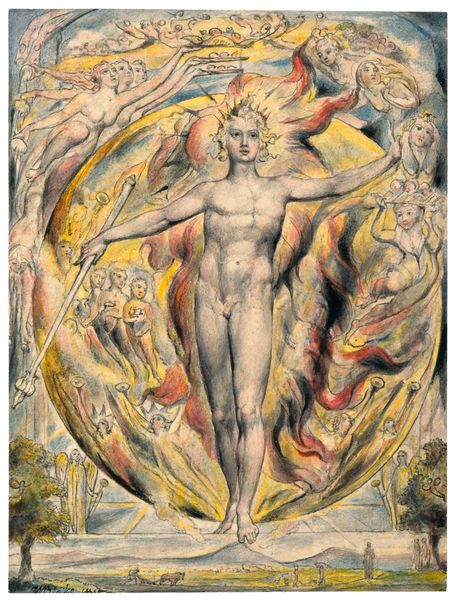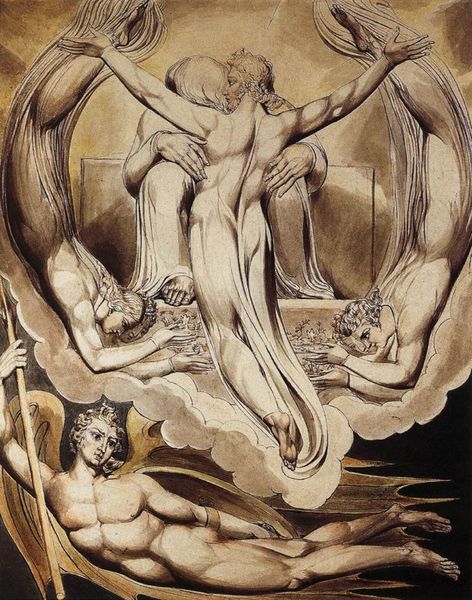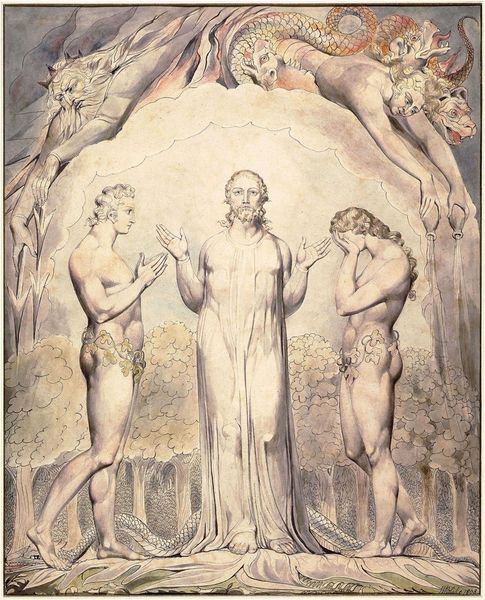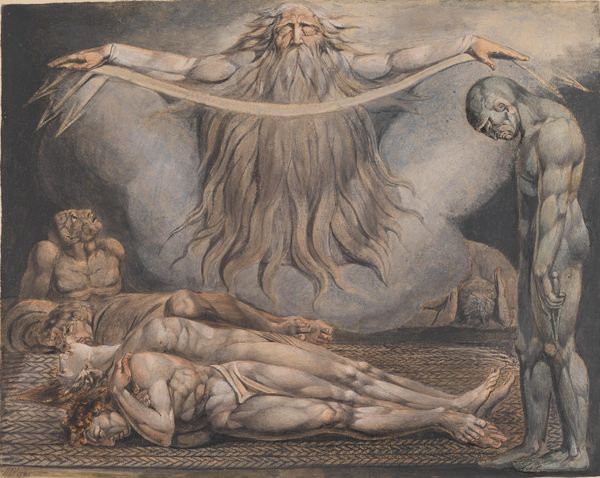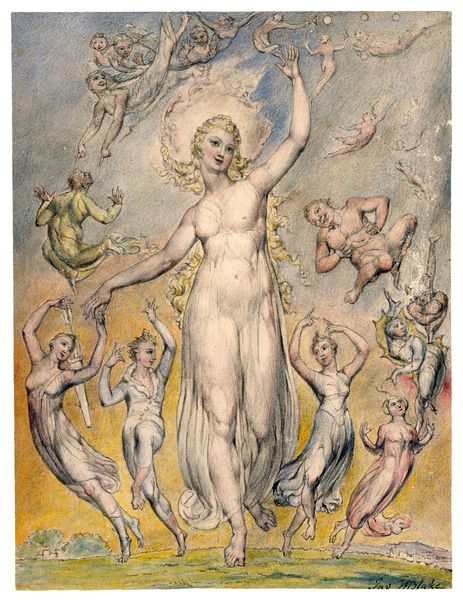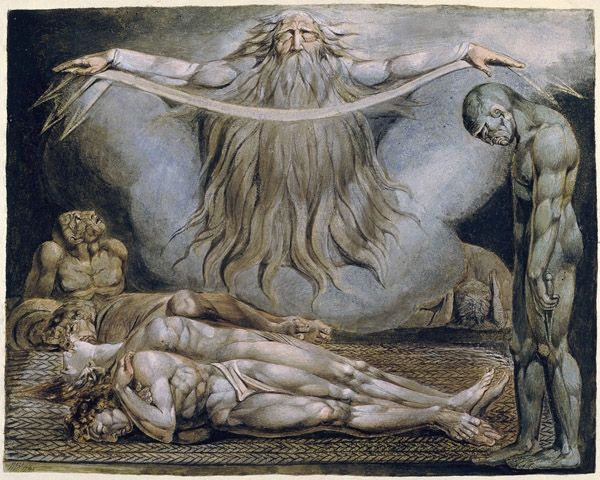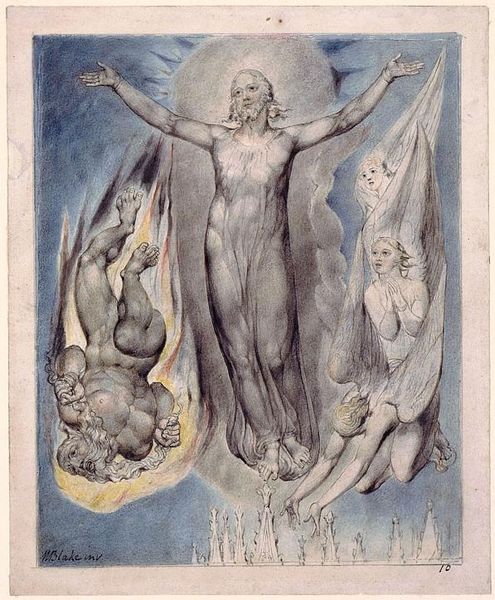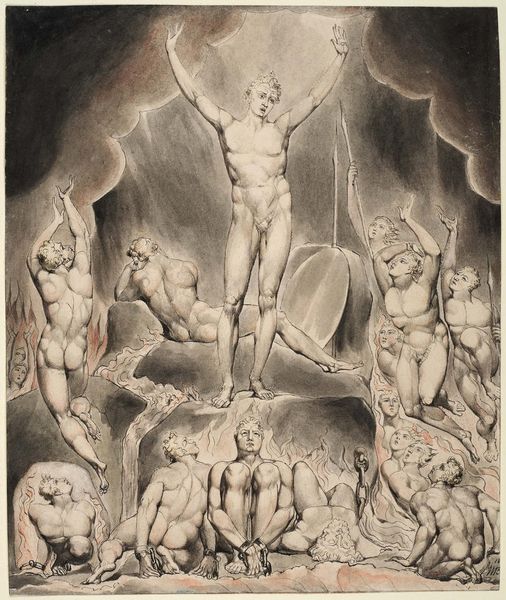
Dimensions: 26.2 x 39.3 cm
Copyright: Public domain
Curator: William Blake created "The Angel of Revelation" using watercolor around 1805. It's a fascinating work, particularly because of its scale. Editor: It’s breathtaking. The initial impact is this figure’s overwhelming luminosity set against that storm-wracked scene. I feel a mix of awe and… terror, honestly. Curator: Exactly, the figure dominates the composition! Look at the placement of that angel. It's a monumental, almost prophetic stance. And below we see turmoil with figures engulfed by the angel, both of these juxtaposed, represent a rupture. One wonders if the drawing is related to Blake's radical perspectives regarding state power? Editor: Rupture indeed. My eyes are immediately drawn to the book clutched in the angel's left hand and also how the small human figures appear at the bottom. It reminds me of the allegorical imagery of illuminated manuscripts. Blake is obviously tapping into the visual language of divine pronouncements, what we’d call signs and wonders! Curator: Certainly! Blake employs potent symbolism throughout his oeuvre, informed by his dissenting religious views and social criticism. Blake seems to use visual traditions to underscore the relationship between the human and the divine, the importance of individual expression. In what way would you say Blake employs religious traditions in the watercolor? Editor: The radiating light signifies divine revelation, that's quite obvious. The turbulent waves on the bottom seem to be evoking chaos, suggesting a period of change and transformation, perhaps a moment of divine judgment. One needs to note Blake uses visual codes and familiar Christian allegories as metaphors to portray abstract forces. He challenges the status quo while engaging the imagery that defined cultural expectations. Curator: Yes. The placement of the figures hints towards a critical stance on traditional hierarchical structures in institutionalized religion, reflecting his beliefs about individual spiritual freedom and how institutions impose strict order that does not allow for spiritual independence. Editor: So much is going on under the surface in this seemingly simple artwork! Thinking about the cultural landscape, in those periods religious allegories and symbolic elements would deeply engage audiences and Blake cleverly appropriates traditional symbols to deliver new insights on the world around us. Curator: Exactly. "The Angel of Revelation" offers an understanding of Blake’s revolutionary thought. Editor: I can feel that it pushes me to ask some very profound and uncomfortable questions about society.
Comments
No comments
Be the first to comment and join the conversation on the ultimate creative platform.
